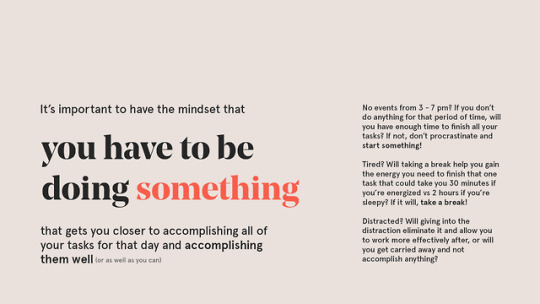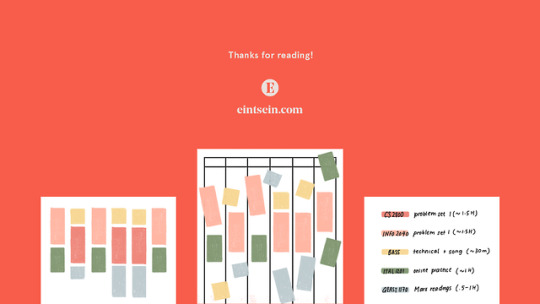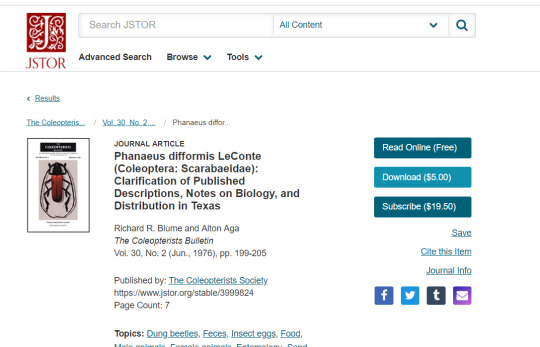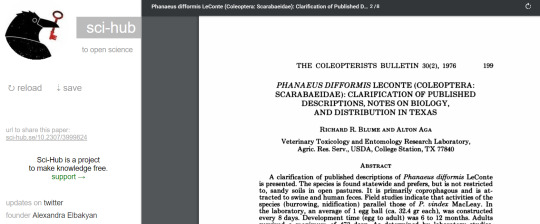Text


109K notes
·
View notes
Text
YouTube Channels for Kids by JLPT Levels
(。•̀ᴗ-)✧ resources

こんにちは, Japanese learners! Learning a language is an exciting adventure, isn't it? To add a spark of joy to your Japanese learning journey, here's a collection of YouTube channels tailored for kids. Organized by JLPT levels, these channels offer a blend of education and entertainment for learners at different stages. Keep in mind, though, that JLPT levels aren't an exact science like math – language learning can be subjective in terms of difficulty. However, these resources provide a fantastic starting point and a fun way to explore the world of Japanese language and culture. Let's hop into this delightful world of animated learning and playful discoveries!
Friendly reminder to adjust your way of learning in order to make the most of what you're studying to reach the goal you truly want! read my post about it (ᵔ◡ᵔ)
꒰ა ˚₊ ✧・┈・╴N 5 ╴・┈・𐑺 ‧₊˚໒꒱
— Curious George (N5 level)
— Japanese folk tales/anime series (Japanese audio/Japanese subtitles) from BomBom Academy (N5 level)
— Peppa Pig (N5-4 level)
— Anpanman (N5-4 level)
— NHK education (N5-4 level)
꒰ა ˚₊ ✧・┈・╴N4 ╴・┈・𐑺 ‧₊˚໒꒱
— Cinnamon Roll, Sanrio (N4 level)
— [Anime] Atashin'chi (N4-3 level)
꒰ა ˚₊ ✧・┈・╴N3 ╴・┈・𐑺 ‧₊˚໒꒱
— Sesame Street Japan (N3 level)
— Chibi Maruko Chan (N3-2 level)
꒰ა ˚₊ ✧・┈・╴N2 ╴・┈・𐑺 ‧₊˚໒꒱
— Precure (N2 level)
またね~@inkichan
꒰ა ˚₊ ✧・┈・╴﹕꒰ ᐢ。- ༝ -。ᐢ ꒱﹕╴・┈・𐑺 ‧₊˚໒꒱
853 notes
·
View notes
Text
ナミヤ雑貨店の奇蹟 - 単語 8

第二章 - 「夜明けにハーモニカを」(4)
喪服 「もふく」 - mourning dress
真一文字 「まいちもんじ」 - straight
ぶっきらぼう - curt, blunt
窘める 「たしなめる」 - to rebuke, to reprove
足早に 「あしばやに」 - briskly (walk)
明言 「めいげん」 - statement
屈辱感 「くつじょくかん」 - sense of humiliation
硬直 「こうちょく」 - stiffness, petrification
腑に落ちない 「ふにおちない」 - hard to swallow, unconvincing
読経 「どきょう」 - sutra chanting
焼香 「しょうこう」 - burning (offer) incense
遺影 「いえい」 - portrait of deceased person
どうのこうの - this and that
筋合い 「すじあい」 - reason, right
畳む 「たたむ」 - to close (a shop, business)
トロ箱 「ばこ」 - box for shipping seafood
取っ組み合い 「とっくみあい」 - grapple, scuffle
御猪口 「おちょこ」 - sake cup
気づまり 「きづまり」 - awkward, incomfortable
皮切り 「かわきり」 - beginning, start
口ごもる 「くちごもり」 - to hesitate to say
踵 「かかと」 - heel (of foot)
小言 「こごと」 - scolding, telling off
葬儀 「そうぎ」 - funeral service
祭壇 「さいだん」 - altar
傍らに 「かたわらに」 - beside, nearby
棺 「ひつぎ」 - coffin, casket
棺桶 「かんおけ」 - coffin, casket
まつわれ - to be related to
耳にたこができる 「みみにたこができる」 - [expression] to be told something that you (metaphorically) get calluses on your ears
興す 「おこす」 - to establish (eg. a compagny)
詫びる 「わびる」 - to apologize
形見 「かたみ」 - keepsake, heirloom
敷地 「しきち」 - plot, grounds
105 notes
·
View notes
Text
I hate coming-of-age anime. While they are not afraid of showing family issues, difficulty with choosing “one’s own path” and many problems concerning adolenscence, there’s one thing they avoid like a plague: skin problems. Oh I get it. “People have much more difficult problems” and “Anime aesthetics doesn’t allow characters with blemish-prone skin”. If such thoughts crossed your minds, I’m happy to respond with: “I see. So you’re a psychogical measurement specialist by profession and you’re able to tell which problems are relevant or not. 偉い��~” and “What a boring aesthetics. If Tanizaki had lived, he would have relinquished his Japanese citizenship”.

(Note: the only delicate problem that I remember seeing in anime was the problem with weight. The thing is… it’s not even “coming-of-age” anime.)
Moving on to Japanese vocab concerning acne (尋常性痤瘡・じんじょうせいざそう・jinjouseizasou) and other unwanted skin imperfections.
にきび・nikibi “pimple”, にきびをつぶす・nikibi wo tsubusu means “to squeeze a pimple”, I probably shouldn’t include that one since it is said that one shouldn’t do that but… you know what they say, let him who is without sin cast the first stone
角栓・かくせん・kakusen “blackhead” or “whitehead”, meanings of individual kanji are “corner-plug”, 栓 alone usually refers to “cork”, though I’m not sure I speculate that 角栓をつぶす・kakusen wo tsubusu “to squeeze a blackhead” is also possible, Japanese Wikpedia also states that terms 白ニキビ・しろニキビ・shironikibi (”whitehead”) and 黒ニキビ ・くろニキビ・kuronikibi (”blackhead”) are also used
酒さ・しゅさ・shusa “rosacea”, that first kanji is for… “alcohol” (its kun’yomi is 酒・さけ・sake which you probably knew before), particularly vicious type of acne
皮脂・ひし・hishi “sebum”, “skin-fat”, I know it’s technically not a skin imperfection but it USUALLY accompanies pimples etc. so I’ve decided to include it, 皮脂分泌量の多い皮膚・ひしぶんぴつ��ょうのおおいひふ・hishi bunpitsuryou no ooi hifu in the sense means “oily skin” (分泌=“secretion”, 量=amount, 多い=a lot, 皮膚=skin), but I don’t believe it’s a casual term
毛穴・けあな・keana “pore”, “hair-hole”, since we talk about skin problems, I’ve decided to include it
痕・あと・ato “scar”, remember that there is also 後 (”after”) and 跡 “trace” or “ruins” and all of them are read あと・ato (notice that all three of them are thematically simillar, all of them express the idea of “something existing after something else happened”)

(Note: How I wish I had coped with my skin problems)
I think this is a first post in which I’m not going to be sarcastic or funny. I know the struggle. The worst part is waking up. There is nothing more terrifying than standing before the mirror, being afraid to turn your gaze towards its surface and wondering whether your face looks presentable enough to show it to the whole world. You open your eyes and you definately don’t like what you see. And then you go to school/work. You talk with people. And you wonder ‘are they looking at me or at my pimples?”, “Was my soul magically transfered to my pimples? Everyone is staring at them”, or “If I’m hit by a car, will blood come out of my body? Or maybe the only liquids that will flow out of my corpse are pus and sebum from my pimpes and pores?” These were my exact thoughts.
I understand you.
43 notes
·
View notes
Text
What do you say to your Japanese native speaker when the class is over and you’re about to exit? Let’s investingate the ways of saying “goodbye” in Japanese:

さようなら・sayounara, it’s a shorter version of さようならば・sayounaraba, it’s defined as 別れの挨拶・wakare no aisatsu “parting greeting”, it’s not used towards people with a higher social position than you
失礼します・shitsurei shimasu, literally it means “I’m doing a rude thing”, it can be used while entering and exiting a room where someone of a higher social position is present
さらば・saraba, simillar to sayounara, but imho it has a pompous and dramatic ring to it, for instance さらば友よ!二度と会わない・saraba, tomo yo! nido to awanai “goodbye my friends! we shall never meet again!”
では・dewa, these two grammatical put together at the beginning of the sentence may mean “so” or “all in all” (it signalizes the fact that you’re about to make a conclusion) like for example では、賛成してくれるんですね・dewa, sansei shite kurerun desune, “So, you agree”, or it can be used to change the topic: では、次の問題に移ります・dewa, tsugi no mondai ni utsurimasu “So, let’s go on to the next problem”, it’s often used used as a way of ending a telephone call, also it often accompanies 失礼します: I think that では put before 失礼します bears a phatic function- it doesn’t really mean anything in particular, it just helps you draw the listeners attention
またね・mata ne, また means “again”, it’s rather informal expression, it can be translated as “peace out”, “so long”
また明日・またあした・mata ashita, simillar to the previous one
行って来ます・いってきます・itte kimasu, informal, used when you’re about to leave your house to other home dwellers, it literally means “I’m going and I’ll be back”, don’t you think it’s quite kakkoi way of parting? When I’m thinking about this phrase I suddenly remember:

では, which one should you use when you’re about to go home after classes? If you picked 失礼します, you’re correct. Think about it. You’re not parting with your precious sensei for a long time, since you’re most likely to be back in a few days time, so there’s no point in uttering the dramatic sayounara.
Well, theory is theory and life is life. I remember when I had my first classes in my new university. I was 100% sure everyone would say 失礼します, but it turned out they were all using sayounara towards a teacher. Probably our Japanese native speaker assimilated in my country (in Poland) so well that she assumed Western way of parting. My advice is this: when you go to your first class from Japanese, take your sweet time and don’t be the first one to go home. Listen how other people say their parting greetings and do as Romans do.
Or you can be that one special and accurate snowflake and say 失礼しま~す
36 notes
·
View notes
Photo






My Japanese “Library”
So recently I had a follower ask me about my Japanese book collection that I had on my desk. So I thought I’d make a post to list them all (left to right as in the first photo). Hope you guys enjoy!
Yotsuba& manga 1-3. These manga are supposed to be really easy to read for beginner learners. Personally I’ve only managed to read a few of chapters but it’s still considerably easier compared to other native mangas. It’s also really encouraging to read these and actually be to understand REAL manga meant for Japanese Natives.
Azumanga Daioh. This is a considerably harder manga which i believe is usually read by Japanese high schoolers and such but I still haven’t cracked open. I just keep it up there for inspiration and motivation.
The next is a children’s dictionary which, again, I still have to crack open. I’ve heard from others that they usually help when you get more into the intermediate level of Japanese but it’s just another book I keep for motivation
Shirokuma Cafe is another easy manga like Yotsuba& about a polar bear who owns an organic cafe and his friends.
Kuruneko is another kind of easy manga about a cat’s life
The next is a practice workbook with 500 Japanese sentences aimed at training you for the JLPT N5-4
MLA Handbook which I keep on my desk for when I’m writing essays for my english class (not japanese)
The next is my Japanese Notebook where I keep all my language notes
The official JLPT N5 practice workbook
Genki Answer Key, along with Both Genki textbooks and workbooks
@shambolicerudition
1K notes
·
View notes
Text
作家 and 作者
While both words mean “author”, you use them differently.
作家 is the job title, the writer. So if you asked what that guy over there in the chair does for a living, you would say 作家, because he is a writer.
作者 is author, used to refer to the person when talking about a written piece of work. So if someone asks you who wrote the book you’re reading, you would use 作者.
245 notes
·
View notes
Text
かける and all the ways it’s used #1
スーパー大辞林より will be a long post!
1.) 物をほかに取り付ける。ものをほかにとりつける。Attach things to other things.
1.) 物を壁や構造物の高い所に運んで行って上部を固定する。上方に掲げる。他の物にぶらさげる。
ものをかべやこうぞつぶつのたかいところにはこんでいってじょうぶをこていする。じょうほうにあげる。ほかのものにぶらさげる。
things carrying on walls and structures’ high places fixed on the upper part. put on the upper part. Hanging onto other things.
壁に絵をかける。
かべにえをかける。 Put a picture on a wall.
戸口に表札をかける。
とぐちにひょうさつをかける。
Put nameplate on a doorway.
窓にカーテンをかける。
まどにカーテンをかける。
Put curtain on a window.
帆をかける。
ほをかける。
hoist sail.
2.) (自在鍵にかけて火の上に置いたことから)鉤などを火の上にのせる。
(じざいかぎにかけてのひのうえにおいたことから)かぎなどをひのうえにのせる。
(because the pothook is put over the fire) hook etc. put over the fire.
鍋を火にかける。
なべをひにかける。
put a bowl over a fire.
3.)(竿秤(さかばかり)の鉤にかけて重さを測ったことから)はかりに載せて重さを測る。(because it’s measuring the weight set on the hook on the beam balance) Measure the weight put on scales.
肉を秤にかける。
にくをはかりにかける。
Measure the meat on scales.
Keep reading
75 notes
·
View notes
Photo






Flexible Time Blocking: A More Breathable Way to Get Things Done
I’ve met a lot of people who struggle with sticking to a schedule - myself included - so here’s one way you can get things done without restricting your spontaneity.
Linked: The ABCDE Method: Accomplish Tasks More Efficiently
Hope this helps!
12K notes
·
View notes
Text
箱推し
はこおし
supporting a (usually idol) group as a whole

単推し 「たんおし」 supporting a specific member of a group
86 notes
·
View notes
Text
Japanese Phrases for Essays
初めに・はじめに to begin with; first of all まず first of all; to start with 最初に・さいしょに first 第一に・だいいちにfirst 劈頭第一・へきとうだいいち first and foremost 次に・つぎに next 更に furthermore そして and; thus その上に・そのうえに in addition; furthermore 他に・ほかに in addition; besides また also 並びに・ならびに both ~ and ~; ~ as well as ~ 及び・および and; as well as それだけでなく not only~ but also ~ のみならず besides; as well as しかも moreover; furthermore; nevertheless; and yet おそらく probably しかし however すでに already その結果・そのけっか as a result それにしては considering that それに対して・それにたいして contrary to this ため in order to; because of というのは the reason why is にしたがって following; in accordance with にとって for; concerning によって due to; because of 一方で・いっぽうで on the other hand 全く・まったく really; truly; entirely 全て・すべて overall; in general 多数の・たすうの countless; majority 必ず・かならず definitely 急速に・きゅうそくに rapidly increasing ますます increasingly; more and more; decreasingly (when declining); less and less 次第に・しだいに gradually; little by little 現在・げんざい nowadays 確かに・たしかに it is true that (but) 要すると・ようする in short 非常に・ extremely 要するに・ようするに in short 全く・またく absolutely 絶対・ぜった�� absolutely 誠に・まことに absolutely 〜によると according to 〜によって due to 従って・したがって accordingly; therefore; consequently 事実上・じじつじょう actually; as a matter of fact; in reality だって also 結局・けっきょく after all おしまい in closing 終わりに・おわりに to finish; to end; to close やはり after all ようやく finally 加えて・くわえる in summary それに加え・それにくわえ to summarise 最後に・さいごに in conclusion
8K notes
·
View notes
Text
I havent seen anyone talk about this yet so im making a post.
So lets say you’re researching something for a paper (or just for fun) and the research paper you want to read is behind a paywall, or the site makes you create an account first, or makes you pay to download, or limits you to only 5 free articles, or otherwise makes it difficult for you to read what you want.

do not fear! copy the link to the article

go to sci-hub.se (the url is always changing so its best to check out whereisscihub.now.sh to find what the current url is)

slap the article link in there

bam! free access!
156K notes
·
View notes
Text
This needs to be said.
I believe it is important to address the other side of studyblr; we all talk about how important mental health is, and should be, in this community. But what we don’t talk about enough is the fact that it’s more clique than anything. By which I mean that certain studyblrs are so big they can seem unreachable; and that can be factored into another issue, the desire to have enough likes and reblogs; we have to have the perfect notes, or there won’t be any other type of notes, if you catch my drift. It’s stigmatic, it’s unfair; some small blogs rely on reblogs from bigger blogs, some rely on posting consistently (or constantly), but the fact remains.
We must change the aesthetic, once and for all, to include the smaller blogs, the dark blogs, the ones that aren’t as actively; it’s a community, not a clique of who has the most stationary or the most followers. Those who have the certain notes that are so admired are wonderful; but not all of us have that time to put into it, and we work just as hard at our academics, at becoming the person we would like to be, as they do.
Studyblr community, love yourselves, even if you don’t have the notes; or the followers. There’s no use beating yourself up about it. We can’t all be big, but what we can do is be proud of our own accomplishments and how we strive towards our own goals. Who cares if your notes don’t get that many reblogs? You made it, and you worked hard on it, and that should be enough.
895 notes
·
View notes
Text
Star Festival Vocabulary

You can read about Tanabata here
Star Festival, Tanabata 七夕「たなばた」
Milky way 天の川「あまのがわ」
Orihime 織姫「おりひめ」
Weaving 機織り「はたおり」
Hikoboshi 彦星「ひこぼし」
Cattle herding 牛飼い「うしかい」
To marry 結婚する「けっこんする」
To slack off 怠ける「なまける」
Divine punishment 罰「ばち」
Punishment (regular) 罰「ばつ」
To pull apart 引き離す「ひきはなす」
Once a year 年に一度「ねんにいちど」
To allow 許す「ゆるす」
Magpie カササギ
Yukata 浴衣「ゆかた」
Tanzaku, Paper strips 短冊「たんざく」
Wishes 願い事 「ねがいごと」
Bamboo 竹「たけ」
Bamboo grass 笹「ささ」
Bamboo decoration 笹飾り「ささかざり」
To decorate 飾る「かざる」
Origami 折り紙「おりがみ」
Folded stars 星飾り「ほしかざり」
Paper kimono 紙衣「かみごろも」
Crane 鶴「つる」
Purses 巾着「きんちゃく」
Streamers 吹き流し「ふきながし」
Nets 投網「とあみ」
Paper lanterns 屑籠「くずかご」‘
719 notes
·
View notes
Text
🎒Backpacks 101🌻
Essentials for Class
Your laptop/spirals/tablet/your preferred note-taking medium. For professors that speak quickly and cover a lot of information in a short amount of time before moving on to the next slide, I always like to use my laptop. Some professors prohibit the use of laptops (even for note-taking). So, I like to use a cheap spiral for class in which I will write information/graphics with the knowledge that they don’t have to be perfect. This is just to ensure that I get the information down. When I get home I transfer all of the notes into a nicer spiral to look over later. This also works to help me retain the information!
My all-time favorite spiral notebooks are the Exceed Five Subject Notebooks. I love these because in the front they have a world map, a punctuation chart, a metric unit conversion chart, spelling rules, a ruler, and a glossary of general reference and research sites.
Loose-leaf paper. This is especially helpful for me because many of my professors will give pop-quizzes/pop-writing assignments. Also great for when a classmate needs to borrow some paper. You can whip it out and make a friend for all semester.
Personally, I like to use Five Star Reinforced Filler Paper by Mead.
Pencil Bag. Naturally, not having to frantically dig around your backpack for a pen/pencil/highlighter makes your day go so much smoother.
I prefer the Mead Five Star Organizer Pencil Pouch.
My pencil bag comes complete with an assortment of pens, pencils, highlighters, two flash drives, a pencil sharpener, and an entire 50 pack of Crayola Super Tips. Yes, my pencil bag fits that much.
Laptop charger & phone charger. I recommend purchasing a powerblock as well to ensure that you don’t have to compete over the use of limited outlets. Thousands of college students across the nation fail to charge their electronics nightly, don’t get caught in the crossfires of that feeding frenzy.
Headphones. Something about not having my music while I’m on the bus or walking across campus really kills my mood for the day.
My planner! Stop writing stuff on your hand or on random pieces of paper. Get yourself a cheap planner. Even if you are not a planner user right now, just forcing yourself to use one for 30 days will forge an unbreakable and life-changing habit! Take it from me.
To Make Your Day Easier
A small umbrella for those days when the weather goes from 75′ and sunny to raining cats and dogs in 3 seconds.
A wallet with your IDs and change. I always kick myself when I didn’t have enough change for the vending machines on campus. I kick myself even harder when I have to ask random strangers for 50 cents to buy a scantron/blue book. Also just a good idea to always have some form of ID on you.
Water bottle. Invest in a super cool, trendy, refillable water bottle to keep yourself hydrated throughout the day. Or just keep refilling the same plastic one.
Deodorant. This is so silly but I am always forgetting to put on deodorant before I walk out the door and I’m 22. When I get to class I realize I’ve forgotten and panic as the Texas heat encompasses me. Travel-sized deodorants are so beneficial.
An emergency tampon/pad. Or two!!! Goes without saying. Surprises are always fun until it’s your period. I keep emergency tampons in my truck, in my apron for work, in my backpack, in my horse trailer. I do not play around.
Ibuprofen/Aspirin
Light snacks. We’re talking a granola bar or seven to keep your stomach from gurgling when you’re taking that exam and of course everyone showed up to class.
A flashdrive.
Chapstick, sunscreen, or lotion can also make you more comfortable sitting in class.
Quick Tips About Backpacks
While, yes, those little fashionable ones are cute, they don’t hold the essentials and can be damaging to your back, causing soreness and discomfort. Buying a Jansport absolutely saved my back and stopped my chronic pain from progressing!
Obviously there are hundreds of amazing brands of backpacks out there, but I strongly urge you to purchase a bag with:
a sleeve inside for your laptop
at least three pockets - so everything has a place
those little mesh side pockets
adjustable (preferably PADDED) shoulder straps!
Another thing! I always place my heavier items (laptop & textbooks) CLOSEST to my back. That way the weight doesn’t drag you down backwards and cause back pain (my doctor literally told me this). This is where having multiple pockets is so helpful.
Adjust your shoulder straps so that you can also maintain good posture while walking. The weight of your backpack + where it sits on your back should not cause you to lean forward or sway backwards in order to compensate. Also fun fact - when I was in middle school I thought it was cool to have a backpack that hung really low (?) and it created a pinched nerve in my neck! Awesome! Don’t be like me!
Remember that backpacks -while they can absolutely be super cute and trendy- are meant to possess functionality. Your backpack should carry the essentials you need to have a successful and comfortable day at class.
Lastly, 10/10 would recommend cleaning out your backpack frequently! Make sure it stays organized and free of clutter. I also like to make sure I take all of my spirals and planner out of my backpack each day after class so that after I rest for a bit - I know I have things I need to get to.
Organizing Your Backpack - By Pockets
-Largest pocket (closest to your back):
Heavier items such as your laptop, binders, textbooks, loose leaf paper and planner. Laptop should go inside the sleeve (if applicable).
-Second largest pocket
Items such as your pencil bag, chargers, and umbrella.
-Smallest pocket
Items that you won’t be pulling in and out too frequently, such as headphones, deodorant, chapstick, a flashdrive, snacks, wallet, keys, painkillers, and your emergency tampons (if applicable).
-Side pockets
Here I obviously like to keep my water bottle or coffee thermos. If you have more than one pocket this is also a great place to keep your little umbrella.
Happy studying, realistic students!
14K notes
·
View notes
Photo

I believe in free education, one that’s available to everyone; no matter their race, gender, age, wealth, etc… This masterpost was created for every knowledge hungry individual out there. I hope it will serve you well. Enjoy!
FREE ONLINE COURSES (here are listed websites that provide huge variety of courses)
Alison
Coursera
FutureLearn
open2study
Khan Academy
edX
P2P U
Academic Earth
iversity
Stanford Online
MIT Open Courseware
Open Yale Courses
BBC Learning
OpenLearn
Carnegie Mellon University OLI
University of Reddit
Saylor
IDEAS, INSPIRATION & NEWS (websites which deliver educational content meant to entertain you and stimulate your brain)
TED
FORA
Big Think
99u
BBC Future
Seriously Amazing
How Stuff Works
Discovery News
National Geographic
Science News
Popular Science
IFLScience
YouTube Edu
DIY & HOW-TO’S (Don’t know how to do that? Want to learn how to do it yourself? Here are some great websites.)
wikiHow
Wonder How To
instructables
eHow
Howcast
MAKE
Do it yourself
FREE TEXTBOOKS & E-BOOKS
OpenStax CNX
Open Textbooks
Bookboon
Textbook Revolution
E-books Directory
FullBooks
Books Should Be Free
Classic Reader
Read Print
Project Gutenberg
AudioBooks For Free
LibriVox
Poem Hunter
Bartleby
MIT Classics
Many Books
Open Textbooks BCcampus
Open Textbook Library
WikiBooks
SCIENTIFIC ARTICLES & JOURNALS
Directory of Open Access Journals
Scitable
PLOS
Wiley Open Access
Springer Open
Oxford Open
Elsevier Open Access
ArXiv
Open Access Library
LEARN:
1. LANGUAGES
Duolingo
BBC Languages
Learn A Language
101languages
Memrise
Livemocha
Foreign Services Institute
My Languages
Surface Languages
Lingualia
OmniGlot
OpenCulture’s Language links
2. COMPUTER SCIENCE & PROGRAMMING
Codecademy
Programmr
GA Dash
CodeHS
w3schools
Code Avengers
Codelearn
The Code Player
Code School
Code.org
Programming Motherf*?$%#
Bento
Bucky’s room
WiBit
Learn Code the Hard Way
Mozilla Developer Network
Microsoft Virtual Academy
3. YOGA & MEDITATION
Learning Yoga
Learn Meditation
Yome
Free Meditation
Online Meditation
Do Yoga With Me
Yoga Learning Center
4. PHOTOGRAPHY & FILMMAKING
Exposure Guide
The Bastards Book of Photography
Cambridge in Color
Best Photo Lessons
Photography Course
Production Now
nyvs
Learn About Film
Film School Online
5. DRAWING & PAINTING
Enliighten
Ctrl+Paint
ArtGraphica
Google Cultural Institute
Drawspace
DragoArt
WetCanvas
6. INSTRUMENTS & MUSIC THEORY
Music Theory
Teoria
Music Theory Videos
Furmanczyk Academy of Music
Dave Conservatoire
Petrucci Music Library
Justin Guitar
Guitar Lessons
Piano Lessons
Zebra Keys
Play Bass Now
7. OTHER UNCATEGORIZED SKILLS
Investopedia
The Chess Website
Chesscademy
Chess.com
Spreeder
ReadSpeeder
First Aid for Free
First Aid Web
Wolfram Demonstrations Project
Please feel free to add more learning focused websites.
*There are a lot more learning websites out there, but I picked the ones that are, as far as I’m aware, completely free and in my opinion the best/ more useful.
533K notes
·
View notes
